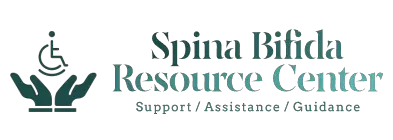Spina Bifida Occupational, Physical, Speech & Recreational Therapy Treatment Options for Children and Adults
Your unborn child can be affected by many conditions, one such is spina bifida, which is a congenital disability that alters the formation of the baby’s brain and spinal cord. According to the (Center for Disease Control (CDC), In the United States, each year, about 1,427 babies are born with SB.
Spina bifida is a lifelong condition that can affect how your child functions for the rest of his or her life. However, there are many forms of therapy to help your child achieve milestones and live the best life possible.
In this post, we will explore the various treatments that can improve your child’s quality of life.
What is Spina Bifida?
Spina bifida is a congenital condition (present at birth) that affects the spine. This condition is a form of neural tube defect and it does not affect only one specific area of the spine, as such, any area of a baby’s spine can be affected (1)
Further, this condition occurs when the neural tube is not completely closed, as it ought to be, which results in the spinal nerves and the spinal cord getting injured. For better reference, the neural tube is the structure within a developing embryo that will form the baby’s spinal cord, brain, and other surrounding structures (1)
Also, depending on the location of the injuries and the size of the opening, these damages may lead to the development of intellectual and physical disabilities that affect fine motor skills, joint movement, etc., along with other health complications (1)
Additionally, there are three types of spina bifida:
- Spina bifida occulta
- Meningocele
- Myelomeningocele
Here is an article about the differences between Meningocele vs Myelomeningocele.
Can a Child with Spina Bifida Ever Walk?
Yes, there is a possibility for a child with spina bifida to walk. Mobility is always an area of concern for parents and rightfully so since the brain and spinal cord play significant roles in one’s ability to move around (2). While a child with spina bifida may not be able to walk independently, it is more than possible for them to do so with the help of assistive devices.
For example, your child can undergo therapy and exercises to learn how to control and use various muscles, as well as strengthen them (2). Some assistive devices that they can use include crutches, wheelchairs, and braces.
Notwithstanding, some children are able to walk without the use of an aid. Again, their ability to walk and the type of assistive device they can use are dependent on which section of their spinal cord is affected (2).
A study published by PubMed looked at 173 children and their ability to ambulate with or without the use of assistive devices within a community setting. The researchers concluded that all children with spina bifida can be anticipated to have a postponement of their ability to walk, including the children who have low-level spinal cord damage (3).
With much and consistent therapy coupled with the use of an ambulatory aid, even children affected by severe damage may effectively walk within the community. However, it is also quite possible that children with severe injuries may stop walking after approximately four years (3).
How does Spina Bifida Affect Occupational Performance?
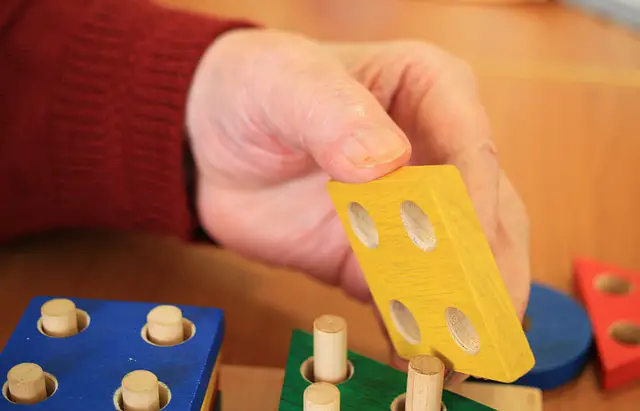
Spina Bifida affects occupational performance by limiting one’s ability to carryout activities that are practiced every day, such as writing, toileting independently, learning, bathing, playing, feeding oneself, etc. and spina bifida can significantly affect your child’s ability to action these basic skills (4).
There are varying degrees to which this condition can affect occupational performance (4). For example, one child may be able to grasp a pencil and write partially legible letters while another child may not be able to grasp the pencil or write any letters.
Here are some other ways in which spina bifida may affect your child’s occupational performance:
-
Incontinence
– when we need to potty, the bladder or rectum receives signals from the brain that tells them to go to the bathroom. However, a child affected by spina bifida may have trouble sending and receiving these signals to hold or release, which results in incontinence.
-
Learning challenges
– because spina bifida affects the brain, it is only natural that it also interferes with learning and other executive functions, such as the ability to exercise restraint with certain inappropriate behaviors and maintain their attention. They may also struggle with planning and following through on those plans. Most kids with spina bifida will also have difficulty with problem-solving. Therefore, things that involve reading, math, and sequencing are challenging.
-
Fine motor skills
– are almost always affected, and as such, there is much with skills like using buttons, zippers, ribbons, and writing (4).
What does Occupational Therapy do for Spina Bifida Patients?
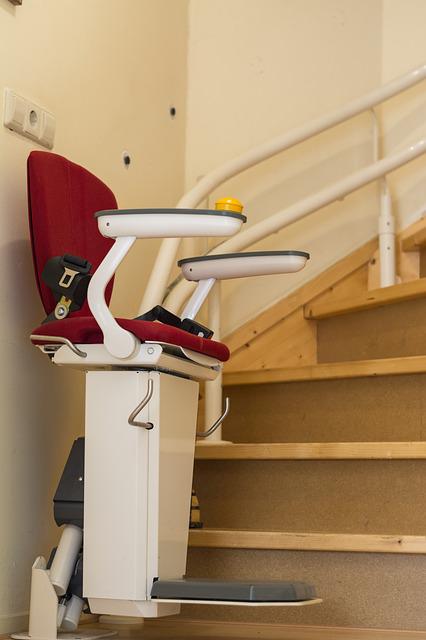
Occupational Therapy for Spina Bifida Patients helps them to develop and improve their ability to carry out everyday tasks and activities, like school participation, work-related socialization, self-care, and leisure.
The Benefits of Occupational Therapy for Children
The benefits of occupational therapy for children are:
- learn to use their hands
- learn how to move either independently or with the use of an aid
- developing sensory abilities and thinking skills
- develop an interest in and actively explore their surroundings
- learn how to better engage with other kids in social programs and with themselves
- develop and strengthen fine motor skills, like handwriting
- learn how to do self-care activities, including toileting, bathing, and getting dressed for school and other occasions
- improve and promote eye-hand coordination and manipulatory abilities.
Occupational therapy is provided by a trained and certified professional who is knowledgeable about the body and how it functions so that they can effectively create care plans and management regimes to help your toddler, school-aged child, or teenager to function as normally as possible. Your child’s age helps determine what milestones occupational therapy may assist with (5–6).
More than likely, your child will be using some form of assistive device; however, as they age, they will need more improved and larger ones. Occupational therapy can also lend its assistance in this regard, as the therapist will help with the application for new equipment as the need arises (5–6).
The Benefits of Occupational Therapy for Adults
The benefits of occupational therapy for adults are:
- Make changes to the set up in and around your home to help you becomes involved in as many activities of daily living as possible
- Employment support to develop the necessary skills you need to successfully become part of the workforce
- Driving training and assessment to ensure that you are capable of handling a car and the road
- Water-based activities are used as a therapeutic means of improving muscle strength (5–6)
Adults can see significant improvement in their ability to undertake and carry out certain activities with the help of occupational therapy. Similar to children, occupational therapy can also help adults affected by spina bifida with developing their self-care skills, social skills, and motor skills.
What Recreational Therapy Treatment Options are Available for Spina Bifida?
There are several recreational therapy treatment options available for both children and adults affected by spina bifida. For children, these recreational therapy options include:
- simple obstacle courses that require crawling
- most forms of water-based-activities, like swimming
- a short walk that includes sight-seeing games, like ‘I Spy’ or ‘what color’
- dancing
- arts and crafts
- board games
- pet therapy (animal interaction)
- aerobic exercise programs
- storytelling
- field trips (7,8,9)
These recreational activities are done according to the age of the child, their fitness, and intellectual level, among other factors. Parents should collaborate with the therapists to ensure that their child is getting into the activities that best suit their skill sets and needs (7,8). However, as your child improves, they will be upgraded to more challenging activities.
As it relates to recreational therapy treatment for adults, they undertake many of the same activities that children benefit from, like water-based sports, board games, dancing, walking, and other aerobic physical activity. However, adults tend to be at a more improved physical and intellectual level and so these activities would be quite challenging. Adults may also be engaged in cooking, baking, and cultural activities (7,8).
The Benefits of Recreational Therapy Treatment for Children
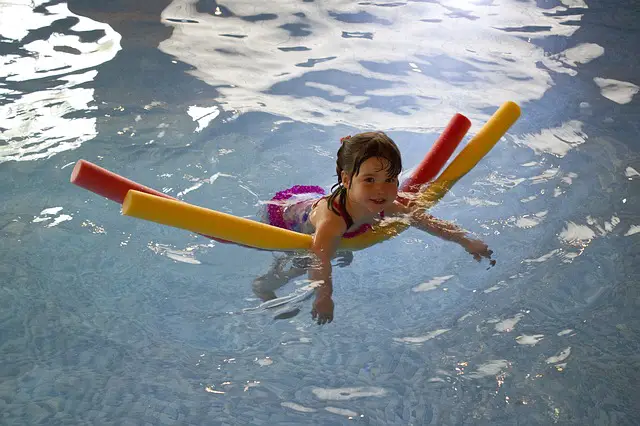
The benefits of recreational therapy treatment for children with spina bifida can improve their often limited play and recreational opportunities and experiences because of reduced movements and physical restrictions. This lack of activity decreases the urge for normal development in all areas and it can produce a negative effect on their self-esteem (7,8,9).
For infants, toddlers, and school-aged children, recreational therapy treatment increases their chances for environmental exploration and interaction with their peers as well as older children with spina bifida (7,8,9).
Adolescents with spina bifida can also benefit from recreational treatment, as it provides chances for participation in accommodated sports or exercise programs for spina bifida, which may result in a long-term interest in personal fitness and health. Recreational and physical fitness targets include:
- enculturation
- weight control
- improved fitness (e.g., flexibility, strength, working capacity, CVS fitness, and coordination).
Please check your local spina bifida clinic for programs that can help your children (7,8).
The Benefits of Recreational Therapy Treatment for Adults
The benefits of recreational therapy treatment for adults involve promoting independence for adult living abilities. It can aid with developing and improving their ability to do everyday tasks, such as shopping for and purchasing personal things, using public transportation, and developing suitable activities. Adults with spina bifida can also benefit from recreational therapy treatment that includes community-based activities (7,8).
Considering that social community participation in recreational activities has been proven to positively impact the quality of life and life satisfaction for people living with spina bifida, it is highly encouraged to be included in their recreational therapy treatment (7,8).
Their exposure to social situations in recreational therapy can help to better integrate them into other social settings, like work and independent community living.
Additionally, for an adult to experience significant health benefits from recreational therapy, it is recommended that they should do “
at least 2 hours and 30 minutes (150 minutes) per week of moderate-intensity activity, or 1 hour and 15 minutes (75 minutes) per week of vigorous-intensity aerobic physical activity, or an equivalent combination of moderate- and vigorous-intensity aerobic activity.” (9)
What Physical Therapy Treatment Options are Available for Spina Bifida?
Physical therapy treatment options are somewhat similar to those used in occupational and recreational therapy. However, physical therapy takes a more exercise rather than activity-based approach. Physical therapy treatment for children or adults with spina bifida may include but is not limited to:
- treadmill usage to influence and maintain mobility and muscle strength
- learning to walk with or without assistive devices
- full body exercises to improve balance and strength
- stretching to improve mobility (7,10)
Some of these exercises are done both in a professional setting with physical therapists and at home under the supervision of parents, guardians, family members, and anyone else responsible for the care of the adult or child (10). To ensure safety and prevent any further injury, the physical therapists design home exercise programs and teach the caregivers how to monitor and assist with the exercises outside the clinic setting.
The Benefits of Physical Therapy for Children
The benefits of physical therapy for children are applicable to even newborns with spina bifida. The pediatric physical therapist will complete an assessment in order to develop a baseline of the child’s muscle function. This baseline will act as a guide to note improvement or decline in condition as the child grows. Throughout the following years, the spina bifida physical therapist monitors joint alignment, muscle imbalances, muscle contractions, posture, and signs of gradually increasing neurologic deficits.
They also provide caretakers with instruction in handling and positioning techniques and recommend orthotic positioning instruments to stop the soft tissue contractures (7).
The Benefits of Physical Therapy for Adults
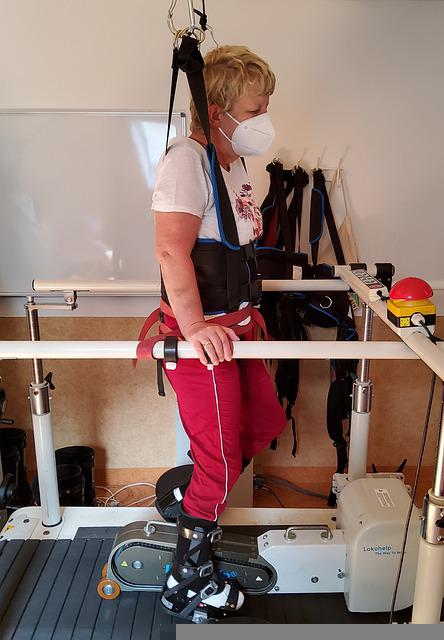
The benefits of physical therapy for adults surround helping them to achieve as much independence as possible. Further, working with a physical therapist regarding spina bifida is best done as early as infancy and can progress into adulthood. However, there are instances where physical therapy may begin or resume during adulthood as well (7).
During adulthood, physical therapy can help them to become active in activities at home, work, and social settings, develop and maintain their strength and flexibility, and prevent chronic complications related to ambulation and muscle movement. Physical therapy also aids with cognitive stimulation (7).
What Is The Role Of The Physiotherapy In Spina Bifida?
The role of physiotherapy in spina bifida management is three-tier. In tier one, the physiotherapist will conduct an assessment of the patient. It is during this triage phase that the therapist will note muscle strength, range of motion, positioning, handling, etc. (11)
Tier two involves consultation with other specialists, such as an orthopedic doctor. This stage of physiotherapy is meant to help with developing a care plan that is personalized to each patient’s health status. Lastly, tier three is where the actual exercises begin and reassessments and consultations are done.
In essence, the overall aim of physical therapy for spina bifida is to provide treatment, education, encourage movement, and hands-on care to improve overall mobility and strength (12).
Physiotherapy is especially beneficial to persons who are in a wheelchair, as these targeted exercises will improve their overall physical development and quality of life. Physiotherapy may also aid with developing their self-worth, improving mood, preventing constipation, and promoting relaxation (9,11).
Can you Exercise with Spina Bifida?
Yes, a person affected by spina bifida can still exercise and participate in physical activities. These exercises are typically scheduled or prescribed by the healthcare team, particularly the physiotherapists, who take into consideration the age and stage of the child or adult.
These exercises will also be limited to the patients’ mobility, muscle strength, and cognitive capabilities. They will also differ for adults and children. Furthermore, the National Center on Physical Activity and Disability, recommends that people with spina bifida exercise at least five times per week and stretch as well. Stretching is advised at least three times per week (13).
Exercising is also a very good way to prevent comorbidities (simultaneous presence of two or more medical conditions), such as obesity, which is the number one complication of being inactive or not as mobile as a ‘healthy’ person. Exercising can also help to prevent heart disease, diabetes, respiratory illnesses, depression, pressure sores, hypertension, and so many other health complications in people with spina bifida (13).
Are there Spina Bifida Exercises for Children?
Yes, there are exercises that are best for children with spina bifida. These exercises will be targeted and arranged based on the healthcare team’s assessment of your child. For example, if your child’s muscles are weaker than the norm, they will do more strength training exercises that target those muscles (14). Some of these child-appropriate exercises for spina bifida include:
- swimming in and out of water
- stretching for toys and other objects
- walking
- crawling through tunnels
- squeezing sponges in the tub
- wheelbarrow (playing the game)
- modified push-ups
- using both hands to slap a large beach ball
- pushing and steering themselves in their wheelchairs (14)Always speak to your child’s primary care provider before attempting to start them in any exercise programs.
Are there Spina Bifida Exercises for Adults?
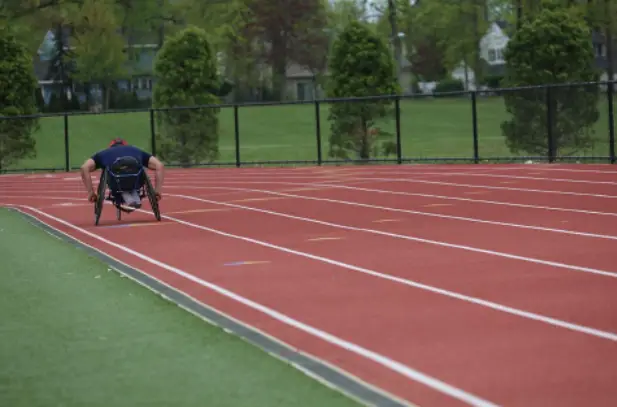
Yes, there are many spina bifida exercises for adults that are very beneficial. These exercises are gauged based on the adult’s capabilities and limitations, such as environment, muscle strength, home support system, level of independence, etc. (14)
Below is a list of some of these exercises:
- stretches that include the neck, hips, biceps, hamstrings, triceps, arms, trunk, and elbows.
- swimming
- playing gentle sports
- pushing their own wheelchair
- strength training, such as pushing and pulling objects, pulleys, weight machines, etc. (14)
What are Spina Bifida Exercise Precautions?
There are certain spina bifida exercise precautions that must be taken when someone affected by the condition is engaging in physical activity. Firstly, be sure to speak with the person’s doctor before engaging in any form of exercise (13). Check to ensure that the products being used for exercise sessions are not made with latex. The majority of people with spina bifida are allergic to latex, as such, they may have severe allergic reactions (14–15). If you aren’t sure what the composition of a particular object is, it’s just best not to use it.
Also, ensure that all emergency and mobility equipment and precautions are in place before starting the exercise session. Test the temperature and texture of all surfaces and exercise equipment to prevent injury to the skin. People with spina bifida often do not have normal sensations, particularly if they are paralyzed from the waist down (13).
This means a surface could be too rough and cause scrapes and abrasions without them realizing it. Hot surfaces can also cause burns.
Rough activities, such as wrestling and football are not encouraged. In fact, they should be avoided since there is a high possibility that they may cause further injury to the spinal cord and other body parts. Furthermore, be mindful of the medical devices that are in place, such as shunts, feeding tubes, and bowel and bladder devices.
Plan the activities with these in mind and avoid exercises that could dislodge the shunt. Remove other devices as advised and necessary (13,15).
Always have your child warm-up and cool down before and after exercising to prevent injuries (16).
What are Balance Exercises for Spina Bifida?
There are balance exercises for spina bifida that suitable for all ages.
For young babies, encouraging sitting up, lifting their heads while lying on the chest, and range of motion exercises. For children who are able to walk, allowing them to stand for a little while maintaining a good posture helps with balance (14).
Here are some balance exercises that are excellent for spina bifida:
-
-
- Tandem standing
- One leg balance
- Standing or sitting hip raise
- Seated leg extension
-
Balance exercises should be incorporated into everyday activities because they play a prime role in developing motor skills, coordination, and balance to improve their quality of life and level of independence (14).
Can you Play Sports with Spina Bifida Occulta?
Yes, you can play sports with spina bifida occulta; however, it should not be strenuous or competitive sports, as these could lead to further spinal cord damage. Also, any sports being done must be under the supervision of a physiotherapist (18).
What are Some Core Strengthening Exercises for Spina Bifida?
Core strength training exercises for spina bifida include:
-
-
- Seated row with Theraband
- Wand trunk rotation
-
-
- Yoga
- Modified hollow lock
-
- Modified v-ups (19)
Final Thoughts
Spina bifida is a congenital disability that affects a large number of people across the United States. It is life-altering and requires a lot of management; however, persons affected by this condition can still have a fulfilling life.
With the help of various therapies, including occupational, physical, and recreational, children and adults living with spina bifida can develop stronger muscles, motor, and socialization skills to become as independent as possible.
References
- Spina bifida – Symptoms and causes. (2022). Mayo Clinic; https://www.mayoclinic.org/diseases-conditions/spina-bifida/symptoms-causes/syc20377860
- CDC. (2020, September 1). Living With Spina Bifida (Infants). Centers for Disease Control and Prevention. https://www.cdc.gov/ncbddd/spinabifida/infant.html
- Williams, E. N., Broughton, N. S., & Menelaus, M. B. (1999). Age-related walking in children with spina bifida. Developmental medicine and child neurology, 41(7), 446–449.
- Spina Bifida Facts Birmingham, Alabama (AL) – Children’s of Alabama. (2014). Childrensal.org. https://www.childrensal.org/spina-bifida-facts
- Spina Bifida – Role of the treating team: Occupational Therapy | Sydney Children’s Hospitals Network. (2022). Nsw.gov.au. https://www.schn.health.nsw.gov.au/fact-sheets/spina-bifida-role-of-the-treating-team-occupational-therapy
- SBH Disability Services. (2022, April 28). SBH Disability Services. https://www.sbhdisabilityservices.org.au/occupational-therapy/
- Spina Bifida Occupational, Physical, Speech & Recreational Therapy Treatment Options. (2022). Spina Bifida Resource Center. https://www.spinabifida.net/occupational-physical-therapy-treatment-for-spina-bifida/
- Healthline. (2020, November 24). The Benefits of Recreational Therapy. Healthline; Healthline Media. https://www.healthline.com/health/recreational-therapy#definition
- Physical Activity Guideline – Spina Bifida Association. (2020, June 5). Spina Bifida Association. https://www.spinabifidaassociation.org/resource/physical-activity/
- Spina Bifida. (2020). Physiopedia. https://www.physio-pedia.com/Spina_Bifida
- Spina Bifida – Role of the treating team: Occupational Therapy | Sydney Children’s Hospitals Network. (2022). Nsw.gov.au. https://www.schn.health.nsw.gov.au/fact-sheets/spina-bifida-role-of-the-treating-team-occupational-therapy
- Guide | Physical Therapy Guide to Spina Bifida. (2021, August 26). Choosept.com. https://www.choosept.com/guide/physical-therapy-guide-spina-bifida
- Pelinks4u. (2022). Pelinks4u.org. http://www.pelinks4u.org/articles/stopka/oct07_c.htm
- CompactCath. (2020, July 27). Exercise for adults and children with Spina Bifida – CompactCath. https://www.compactcath.com/blog/exercise-for-adults-and-children-with-spina-bifida/
- CDC. (2020, September 1). Living With Spina Bifida (Infants). Centers for Disease Control and Prevention. https://www.cdc.gov/ncbddd/spinabifida/infant.htm
- Spina Bifida – Be active kids with Spina Bifida | Sydney Children’s Hospitals Network. (2022). Nsw.gov.au. https://www.schn.health.nsw.gov.au/fact-sheets/be-active-with-spina-bifida-0
- Center, N. (2009). Balance Training Exercises [YouTube Video]. In YouTube. https://www.youtube.com/watch?v=mBuobIHl06E
- Kälicke, T., Frangen, T., Seybold, D., Steuer, K., & Arens, S. (2004). Infantile Spondylolyse mit Spina bifida occulta beim Leistungssportler. Sportverletzung · Sportschaden, 18(04), 204–208. https://doi.org/10.1055/s-2004-813150
- 20 Best Core Exercises for Toned Core & Abs. (2022, February 23). Adidas Runtastic Blog; adidas Runtastic Blog. https://www.runtastic.com/blog/en/10-moves-strengthen-core/
